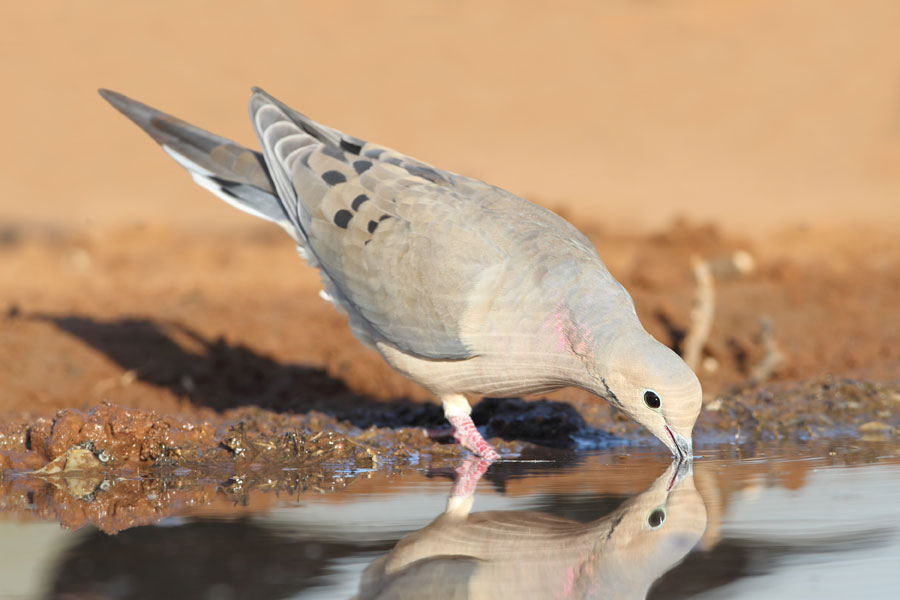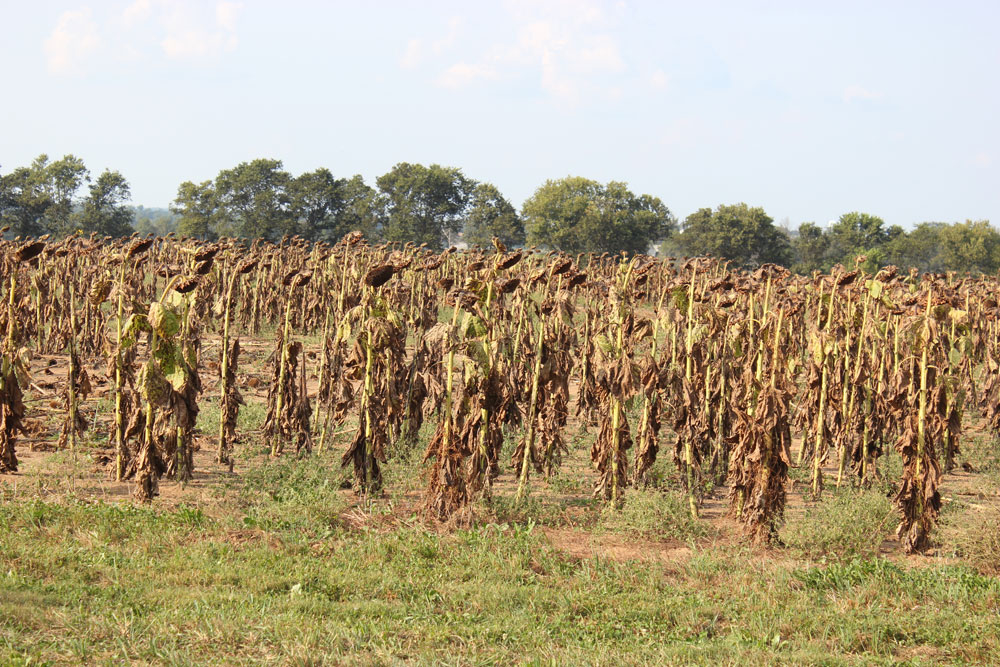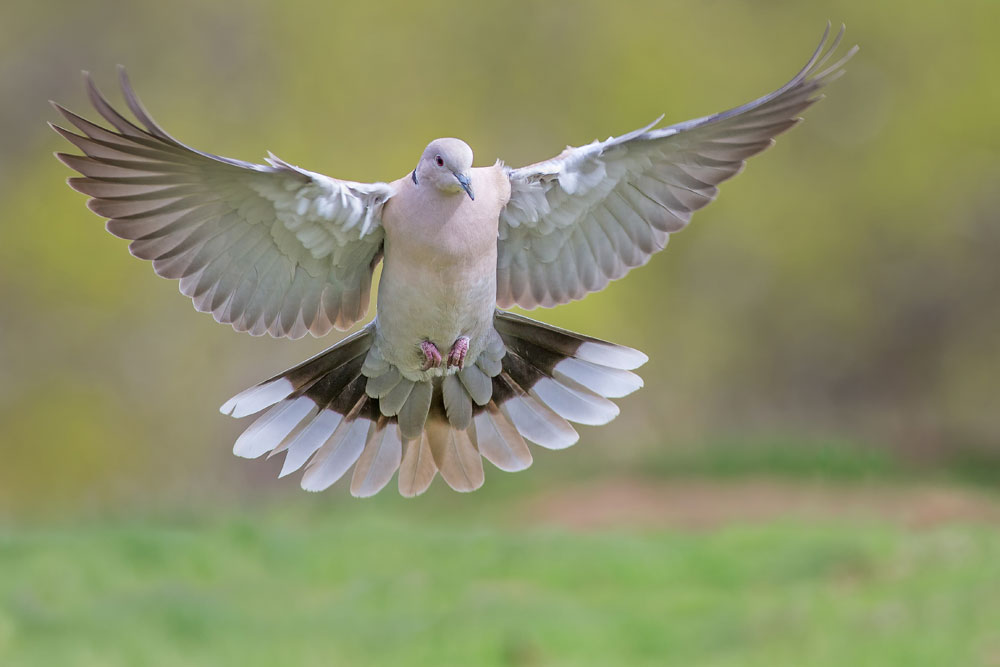Building a Better Dove Field
Editor’s Note: It may be too late for this Dove Season, but, his information will assist you in creating a better dove field for next years hunt.
In many areas of the country the dove opener marks the beginning of the fall hunting season, and there are few more enjoyable ways to spend a September afternoon than sitting on an upturned bucket staring at the sky and waiting for the birds to appear. Good dove hunting can also up the value of your hunting property. Hunters in the market for a new patch of land to hunt will be more likely to pay for a parcel of land with an established dove field.
Whether you are managing dove fields for fun or profit, every landowner should carve out a patch of land and dedicate it to hunting America’s favorite native game bird. This doesn’t have to be a big patch of ground, either; a few tracts of land that are an acre or two in size will suffice, and with a little extra time and effort and a minimal investment you can reap the rewards of having an established upland field early in the season.
Dove habitat won’t detract from your other game management routines and in fact, building a dove field may actually improve the habitat for other game animals. Deer, for instance, often use dove fields for cover and, depending on the crop, whitetails may actually feed on the plants you’ve established for birds, so planting a dove field might help improve your odds of success pursuing other game.
WHAT DOVES WANT
Doves are simple creatures and their day-today activities are pretty routine. Finding food – generally in the form of seeds – is the first order of business. Our native mourning dove, as well as the invasive collared doves that were introduced to the United States in the 1970s, are “ground feeders.” They spend their time shuffling along open areas in search of dropped seeds and grains.
Additionally, doves need a water source, so they prefer to feed in areas near water. However, they will travel considerable distances when water is scarce.
Doves have a gizzard, a portion of the esophagus that helps them break up tough seeds using digestive juices and small stones and other hard items. Those hard items, known collectively as “grit,” must be ingested by the birds, and this is why you’ll oftentimes see doves picking at rocks on the side of the road or in sandy open areas.
Doves also look for good roost sites. It you happen to have all four of these items – food, water, grit, and roost trees in one area, you’ll likely have a lot of doves.
Planting Dove Field On Your Property
As previously mentioned, doves are ground feeders. They spend most of their time pecking at the earth, and their round bodies and rather short legs aren’t well-suited for wading through tall weeds. As such, doves need open ground. Can doves eat in areas with some ground cover? Yes, but your dove field will be much more attractive to the birds if it’s free from weeds and debris.
Because of this, you’ll need to clear the ground. That can mean mowing, but many dove field managers clear the weeds with herbicides. As with managing any wild-life, the ultimate goal is to make the area as attractive to target species as possible, and for doves that means plenty of places to walk around. The good news, though, is that doves don’t need a lot of land and food. In fact, a couple dove fields two acres in size will hold enough birds so multiple hunters can shoot limits if they don’t overhunt the property.
Add a bit more managed dove land…say three fields that are four or five acres in size, and you’ll likely have more than enough birds. They key, of course, is providing the right food source.
Since doves eat seeds and grains that have fallen to the ground you’ll need to decide upon a crop that produces abundant seeds and matures at the right time of year (generally late August). Sunflowers are the most common choice, but they certainly aren’t the only option. BioLogic’s Grain Sorghum is a great choice since it’s hardy, matures quickly, and produces ample food that will bring lots of doves in to feed, even on small food plots.
Another excellent choice from BioLogic is their WhistleBack, which produces an excellent crop for doves. As an added bonus, it attracts and holds turkeys and game birds like quail and pheasants, too.
Site selection is key when establishing a dove field. In fact, because dove fields can be relatively small it’s oftentimes better to find areas that provide all the key elements doves need and then find space to squeeze in a field. Look for roost areas like dead trees or eastern red-cedar groves that are located near water. A dove’s diet of seeds requires a great deal of water for proper digestion, and dove fields planted in close proximity to a water source will never fail to bring in more birds than fields that require the birds to fly great distances back and forth to water, often multiple times a day.
If you have a duck impoundment you should certainly consider placing a dove field nearby. Overhead power lines also provide roosting cover, so a property that has overhead lines and an accessible water source for the birds is another good choice.
Early site prep involves breaking up the ground and, above all else, clearing weeds. Limited ground cover is critical to establishing a successful dove field, and I can attest to how ignoring ground clearing can ruin an otherwise productive dove field. My first attempt and man-aging for these birds was a total disaster because I failed to clear the ground properly. Mowing the crop helps, but even that is only effective if the birds can navigate on ground level and find seeds. The simplest way to ensure success is knock the weeds back early and often.
AS SEASON APPROACHES
As you get close to the hunting season it’s time to start scouting and cutting the crop. Mowing rows in your dove fields will scatter seeds and bring the birds into your area, but you must time your mowing correctly so that the birds are aware of the food and actively feeding on opening day.
There are a number of ways to accomplish this, but I divide my dove acreage into five equal-sized parts. I’ll mow one-fifth of the area just prior to season (but after the crops have matured). This opens an area for the birds to feed, and there are generally enough seeds available to keep birds moving in and out of the field regularly.
After my initial cut I begin scouting, watching to see when the birds are feeding. This is usually dawn and dusk, but you may find that, for whatever reason, the birds in your area prefer to feed midday. Look for birds on lines, collecting grit, watering or passing by, and make a mental record of the activity in your dove field. This will help you position yourself for the most action.
Generally, the idea is to establish a stand site in cover that faces away from the sun at the optimum time of day. The best fields offer enough perimeter cover to allow hunters to conceal themselves at any area and to change locations as the sun’s position and the bird’s behavior dictates. Cover on the edge of the field can be natural (an overgrown fencerow, overhanging trees, and so forth), but I prefer to establish my own cover simply because I know I won’t be sitting in a bunch of unseen briars or poison ivy when the season opens.
By planting cover in the form of crops like Egyptian wheat, which grows upwards of ten feet tall, you’ll have good cover that breaks up your outline without the bite of thorns or the itch of toxic plants. Plus, a ring of cover around the field will discourage poachers and trespassers. Make note of the direction of primary travel during the hours you plan to hunt, and position yourself accordingly.
TOO MUCH OF A GOOD THING
If you head out on the opening morning of dove season with a group of friends and everyone kills a limit, it’s tempting to hunt there again another day. That’s a mistake. Dove fields can easily be burned out by overhunting, and these birds quickly learn to avoid areas where they have faced swarms of pellets each day.
Ideally, you can plant two fields and alternate hunting days. If a dove field has a day or two to rest between shoots you’ll take more birds over the course of the season, and if you have the land and ambition to plant more fields you can generally hunt a new spot each day without ruining the field.
WHAT ARE YOU WAITING FOR?
The time to start planting for doves is right now. If you manage property, adding a dove field is an easy and afford-able way to add value to your land. It also offers a fun way to kick off the season – and the promise of dove breast, jalapeno, bacon, cream cheese wrap-ups is perhaps the finest of all wild game recipes.










0 Comments